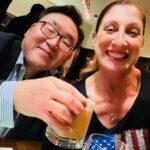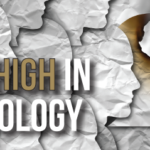
Having just completed my teaching obligations on the consult service, I was looking forward to a relaxing long weekend break. Driving along the I-93, heading north towards New Hampshire and beyond, I was in a fine and festive mood. That is, until I made the mistake of checking to see whether that latest ping sound emitted by my iPad was trumpeting the arrival of an e-mail message from my secretary. I suffer from device overload syndrome, a disorder where these techno sounds stimulate a sudden urge for those afflicted to immediately stop whatever they are doing and read the latest message. This one was notifying me that the new patient I had seen just a few hours earlier, the one for whom I ordered an MRI study of the hip, was being denied this test until I could explain my clinical rationale to a representative of her health insurance’s radiology benefits management company.
I guess I shouldn’t have been surprised that an inexperienced office clerk might not have followed my logic for ordering the test. Would they simply stare at the words on the form describing the bare facts of the case? A lovely 38-year-old woman from Maine with active rheumatoid arthritis and chronic kidney disease suddenly had problems walking. I had written my differential diagnosis (septic arthritis, avascular necrosis) in legible big block letters and forwarded a copy of her X-ray report, demonstrating normal appearing hips. Yet all this effort was to no avail; the benefit managers were not appeased. So, with my spouse taking over the driving duties, I called the company’s toll-free line. A pleasant woman answered and immediately asked for some demographic information. Sure, I replied. I provided the patient’s name and the 8-digit number assigned to this case. “Well, can I have her date of birth, too?” “Are you kidding?” I replied. “Isn’t the information I just gave you sufficient to identify her?” I explained that I was not in my office, but the clerk could not seem to care. Then she uttered one of the most overused eponyms in healthcare: “Doctor, HIPAA rules require you to provide me with her date of birth.” What could she be thinking? Yes, Dr. Helfgott, even though you knew the patient’s name, her approximate age, state of residence, and 8-digit case reference number, perhaps you just guessed correctly? I still need another way for you to confirm her identity or we cannot continue this conversation. She didn’t actually say all this but she must have been thinking along these lines.
Our conversation was going nowhere fast, so I asked to speak to her supervisor. She came on the line and seemed a bit more reasonable. She spotted a problem; it seemed that the MRI requisition was entered twice. I thought this implied an easy resolution to the problem; just delete one request and approve the other. “Well doctor, you will still need to speak to our medical reviewer. Please stay on the line for the next available doctor reviewer.” At this point (12 minutes and counting), I wanted to be assured that the reviewer would in fact be a radiologist. After all, this company advertises as being a medical imaging review company. “No, doctor, we have all kinds of doctors reviewing these cases.” I was taken aback. “You mean I might get a psychiatrist to review the necessity of this request?” I was told to stay on the line and I would soon learn the identity of the mystery radiology reviewer.
About the time it took to cruise past two more highway exits, a radiologist came on the line. He quickly approved the study. When I complained that this whole encounter had taken 18 minutes, he suggested that in the future, I use their unpublished direct line for doctors. It was his way of making amends. Somehow I failed to get excited about this wonderful offer. It felt like getting a coupon for “50% off your next purchase” when you have no intention of ever making that next purchase.
Ah, on what little things does happiness depend!
—Oscar Wilde, The Nightingale and the Rose (1891)
The Happy Docs
Nowadays, our lives are filled with these irritating phone calls and maddening faxes seeking additional information. We have come to accept constant meddling on the part of the patients’ payers as a way of life. Surprisingly, these annoyances have not dampened our spirits; we remain the happiest of all doctors. That is the conclusion of the 2012 Medscape Physician Lifestyle report, where the authors observed:
“With a rating of 4.09 (out of a maximum score of 5.0), the most cheerful physician of all, whether male or female, is a rheumatologist. She was born in the United States and is of normal weight and excellent health. He exercises 4 or more times a week, has 1 or 2 drinks a day, and doesn’t smoke. She is in great financial shape, with more than adequate savings and no debt. He is married, actively practices his faith, and volunteers for his religious organization. One of the more interesting findings was that happiness was greatest in physicians over 60 years of age.”1
Jim O’Dell, MD, discussed these findings in his July editorial in The Rheumatologist (p. 4). In his homage to David Letterman, Jim listed his top ten reasons why rheumatologists are the happiest specialty. At Number 5 was the observation that, “rheumatology self-selects happy people.” I wondered whether this could be true. The data are obviously scant. I recently had lunch with a junior resident in internal medicine who decided that she wants to become a rheumatologist. She was smart, vivacious, and enthusiastic. Her broad smile never left her face and it made me realize that she had the makings of a great rheumatologist. I think that Jim’s observation is spot on. Maybe it is nature and not nurture that explains “the rheumatologist’s bliss.”
Nature or Nurture?
The field of molecular psychopharmacology has studied the genetics of happiness and some rather interesting data has recently emerged. A group of Dutch investigators have used their nation’s twin registry, comprising over 12,000 twins and siblings, to create a genetic model of happiness.2 The heritability of happiness was estimated to be 22% for males and 41% for females. To identify the genomic regions contributing to this heritability, a genome-wide linkage study for happiness was conducted in sibling pairs. One linkage signal was detected at the end of the long arm of chromosome 19 and a second one was observed on the short arm of chromosome 1.
An American case-controlled association study found that individuals with the transcriptionally more efficient version of the serotonin transporter gene, 5HTTLPR, reported significantly higher levels of life satisfaction.3 Other investigators are focusing on the role of the gene expression regulator, microRNA, as a potential therapeutic target for the treatment of mood disorders. Yet, all these studies caution that, at most, the heritability side of the happiness equation accounts for about 40%. So what about environmental factors?
I thought that it might be helpful to look for clues as to how the environment may shape happiness by reviewing some of the personal statements submitted by prior applicants to our rheumatology fellowship program. I was not deterred by the findings of a previous British study that evaluated whether long-term unhappiness and dissatisfaction with medicine could be predicted by analyzing the applicant’s personal statement written fifteen years earlier.4 The authors could not find such an association. I have found that these short essays provide the reader with some context about the applicant’s personality. Though the opening paragraph can be a bit formulaic (“I learned all about lupus through the eyes of my aunt,” or, “There is nothing more elegant in biology than the T-effector cell”), later paragraphs tend to become more revealing.
After reading through a batch of these essays, the most striking observation is the diversity of the applicants’ experiences. It was fascinating to read about journeys that began at the foothills of the Himalayas or somewhere in the Libyan desert. One of my favorite depictions concerned an applicant who decided that he wanted to become a doctor, “when my best friend was diagnosed with juvenile arthritis and we were no longer able to climb the mango and guava trees together in India.” Some of their medical school experiences were quite remarkable.
“A major outbreak of Chikungunya fever ravaged my state during my final year of medical school and I witnessed firsthand the debilitating effect of this disease.” It is inspiring to read about an African applicant who had to learn a fifth language to attend medical school. She subtly suggests that she is still struggling with the whole idea of taking multiple-choice tests. There is the applicant who spends a rotation at a Peruvian public hospital, where he encounters, “a patient with obvious rheumatoid arthritis who is seeing a doctor for the first time in twenty years.” These vignettes share common themes of hope, optimism, and determination, the precursors for a happy life.
We are not the only physicians who help their patients; however, I believe that it is the quality of our patient interactions that sets rheumatology apart.
The Happiness Pie
The social scientists, Sonja Lyubomirsky, PhD, professor of psychology at the University of California at Riverside, Kennon Sheldon, PhD, professor of psychology at the University of Missouri at Columbia, and David Schkade, PhD, professor of management and strategy at the University of California at San Diego, have studied the science of lasting happiness. Their analysis of the existing research led to their creation of a simple pie chart showing what determines happiness. About half of the pie is attributed to the genetic set-point of the individual. The smallest slice, about 10%, is related to one’s particular circumstances. So what is the remaining 40%?
According to Dr. Lyubomirsky, what is left must be “intentional activity,” mental and behavioral strategies to counteract human nature’s downward pull towards unhappiness. These authors stress that people need to get over the idea that happiness is a fixed mood. Instead, we need to realize that sustained effort can boost it. As rheumatologists, it is our patients who provide us with countless opportunities to hone our happiness skills. For example, what could be more satisfying for both patient and clinician than to be diagnosed with a treatable rheumatologic disorder, especially one that had previously been misdiagnosed by others? We help to ease the burden of disease for many of our patients and this energizes us. We feel great when we help others feel better. Reducing pain and malaise and restoring patients’ lives, these become meaningful events in our lives, too. This symbiotic relationship is what drives our happiness meters to the top of the scale. Our patients bring us naches!
We are not the only physicians who help their patients; however, I believe that it is the quality of our patient interactions that sets rheumatology apart. For example, consider the specialties at the lower end of the Medscape happiness scale; oncology and neurology. These two disciplines tackle some of the most daunting and refractory conditions in medicine. It may come as no surprise that dealing with these maladies on a daily basis may wear down even the happiest and most optimistic physicians.
Money Isn’t Everything
My informal survey of friends and colleagues observed that most individuals guessed that the happiest doctors would be those with the highest incomes. Well, money does not buy happiness. This observation was noted by one of the founders of the field of behavioral economics, the Nobel Laureate Daniel Kahneman, PhD, professor emeritus of psychology and public affairs at Princeton University in Princeton, N.J. According to Dr. Kahneman’s research, when people consider the impact of any single factor on their well-being—such as income—they are prone to exaggerate its importance. This tendency is referred to as the focusing illusion. In many of his experiments, he has demonstrated that the effect of money on creating long-term happiness is illusory.
Elizabeth Dunn, PhD, associate professor of psychology at the University of British Columbia in Vancouver, and Michael Norton, PhD, associate professor of business administration at Harvard Business School in Boston, have studied the role of money in creating happiness. They found there is a measurable connection between income and happiness; people with a comfortable living standard are happier than those living in poverty.5 But here is the catch: Once the comfortable standard is achieved, additional income doesn’t buy any additional happiness. The magic number that defines this “comfortable standard” varies across individuals and countries, but in the United States, it seems to fall somewhere around an annual income of $75,000. Using Gallup data collected from almost half a million Americans, researchers at Princeton found that higher household incomes were associated with better moods on a daily basis—but the beneficial effects of money tapered off entirely after reaching the $75,000 mark. This sum is far below the average annual salary of American rheumatologists, which is about double this amount.
Get That MRI?
Back to my patient. She had her hip MRI and it demonstrated a fair amount of boggy synovitis and some erosive disease affecting the hip. I proposed some changes to her treatment regimen, and we will see how she fares over the next few months. I hope that my encounter gave her hope that she can get better. Conversely, her sense of confidence in my skills provided me with a heightened sense of well-being and happiness.
I started wondering that if, during this patient encounter, my head had been placed into a functional MRI (fMRI) unit, would it have revealed differences in gray matter volume in my right temporo-parietal junction? Swiss researchers have demonstrated that this region can identify those individuals with a general propensity to behave altruistically.6 So, what if we required all of our fellowship applicants to undergo a fMRI as part of the application process? After all, I kept that “unpublished direct line for doctors,” so maybe we can expedite their MRI prior authorizations in a flash. That would make me happy.
Dr. Helfgott is physician editor of The Rheumatologist and associate professor of medicine in the division of rheumatology, immunology, and allergy at Harvard Medical School in Boston.
References
- Medscape. Medscape Lifestyle Report 2012. Available at www.medscape.com/sites/public/lifestyle/ 2012. Published March 22, 2012. Accessed August 16, 2012.
- Bartels M, Saviouk V, de Moor MHM, et al. Heritability and genome-wide linkage scan of subjective happiness. Twin Res Hum Genet. 2010;13:135-142.
- De Neve JE. Functional polymorphism (5-HTTLPR) in the serotonin transporter gene is associated with subjective well-being: Evidence from a US nationally representative sample. J Hum Genet. 2011;56:456-459.
- McManus IC, Iqbal S, Chandrarajan A, Ferguson E, Leaviss J. Unhappiness and dissatisfaction in doctors cannot be predicted by selectors from medical school application forms: A prospective, longitudinal study. BMC Med Educ. 2005;5:38.
- Morishima Y, Schunk D, Bruhin A, Ruff CC, Fehr E. Linking brain structure and activation in temporoparietal junction to explain the neurobiology of human altruism. Neuron. 2012;75:73-97.
- Aknina LB, Nortonb MI, Dunna EW. From wealth to well-being? Money matters, but less than people think. J Posit Psychol. 2009;4:523-527.



